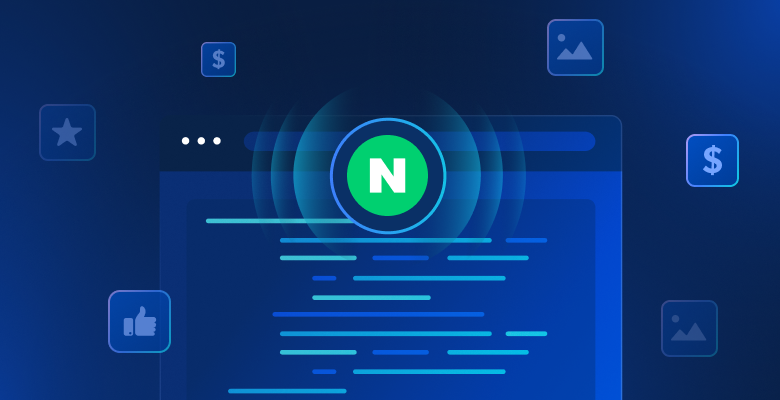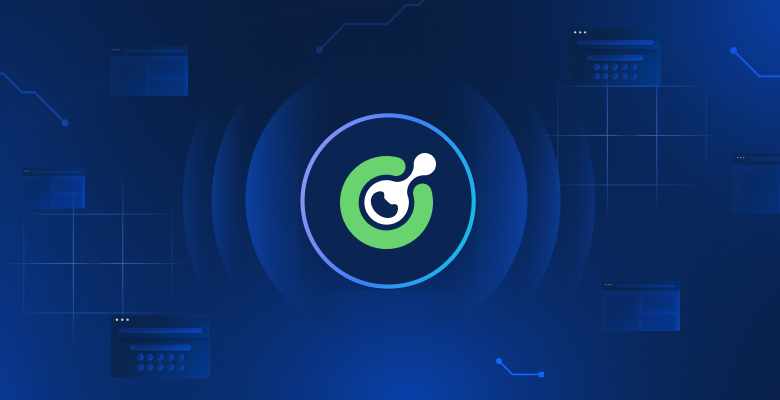In this guide, you will learn:
- The definition of data sourcing
- The types of data involved in the sourcing process
- The different types of data sources
- Popular data sourcing examples
- Key concerns related to retrieving and using data
Let’s dive in!
What Is Data Sourcing?
Data sourcing is the process of identifying and gathering data from various sources for a specific purpose. This is typically the first step in a data pipeline, where the collected data is subsequently processed to achieve a particular goal. During this procedure, it is essential to ensure that the data is relevant, accurate, and sufficient for completing the task.
Businesses rely on data sourcing for a wide range of activities, including decision-making, market research, and reporting. As you are about to learn, data sources can vary widely and involve both structured and unstructured data. Find out more in our guide on structured vs unstructured data.
Data Types in Sourcing
When it comes to sourcing data, it is possible to distinguish between two types of data:
- Primary data: Information collected firsthand with a particular goal in mind or for a specific project. It is highly tailored to specific research objectives to ensure maximum accuracy. Methods for collecting primary data include surveys, interviews, and questionnaires.
- Secondary data: Information that has already been collected by other parties. Examples include public reports, research studies, academic papers, and data from online databases and sites. This info can be accessed freely or by paying a fee and reused for new analysis or study.
In summary, primary data is original and collected directly to meet a specific need. Instead, secondary data is pre-existing and repurposed for new research objectives.
Types of Data Sources
While there are countless ways to retrieve data, data sources can be broadly categorized into two main types:
- Internal sources
- External sources
Essentially, data can be sourced either from within a company or project (internal) or from outside (external). That is the most intuitive high-level distinction you can apply to data sourcing.
Time to dig into these two types of data sources!
Internal Sources
Internal sources refer to data generated and stored within an organization. This includes data from company records, CRM software, employee feedback, customer databases, sales reports, and more.
Internal sources can provide primary data when collected specifically for a particular purpose, such as through internal surveys. When this data is repurposed for new goals—such as when feeding it to decision-making processes—it can also serve as secondary data.
External Sources
External sources involve data that originates from outside the organization. That usually comes from public records, data from third-party providers, and other external datasets. For more information, read our definitive guide on datasets.
External sources can provide primary data when collected for unique needs, such as by commissioning a survey to your customers. They can also generate secondary data, such as when gathering customer feedback from social media and using it for marketing purposes.
How To Define an Effective Data Sourcing Strategy
Defining an effective data sourcing strategy is key to ensuring that you are collecting the right information for your goals. To be effective, the process of sourcing data must be tailored to your specific needs and constraints.
In particular, ask the following questions to develop a robust data sourcing strategy:
- What is the purpose of the data collection?
- What types of data are required?
- Where will the data come from?
- How much time and money will it take to extract this data?
- How will the data be collected?
- What are the data quality requirements?
- What are the legal and privacy considerations to keep into account?
- How will the data be integrated and harnessed?
- What resources (e.g., technologies and tools) are required?
- How will you measure success?
Addressing the above questions will help you create a unique data methodology that aligns with your objectives.
Data Sourcing Methods
Analyze the most well-known and practical data sourcing examples in today’s digital information age.
Open Data
Open data refers to freely accessible datasets provided by governments, organizations, and institutions. That generally represents a good starting point for sourcing data.
Open datasets are often made available to the public to promote transparency, innovation, and research. Examples include economic indicators, environmental data, and health statistics. Open data is valuable for various applications, especially in academic research. The main benefit of open data is that it can be used without restrictions.
APIs
APIs, short for Application Programming Interfaces, enable online systems to communicate with each other by exchanging data. Many companies and providers offer free or paid APIs that developers can use to access their data in a structured format. For example, social media platforms tend to provide APIs to retrieve public user profile information, posts, and interactions.
APIs are an efficient way to programmatically obtain and integrate data into your applications and services. Check out our guide on web scraping vs API.
Web Scraping
Web scraping is the process of extracting data from online pages using browser automation tools or HTML parsers. This data extraction method is a powerful way to source data that is not available through APIs or public databases. The idea is to connect to a website, navigate its pages, and retrieve the data of interest directly from the HTML documents.
For more guidance, refer to our introductory article on web scraping.
Commissioned Data
Commissioning data involves hiring a third-party company to collect specific data for you. The data provider designs an effective data retrieval approach, ensuring the final result meets your expectations.
After paying for such a service, the provider handles all aspects of data collection, including compliance and privacy considerations. This approach ensures that the data is customized and relevant to your unique requirements.
Need some data? Get a custom dataset!
Custom Surveys
Custom surveys involve asking participants specific questions to collect data with a clear goal in mind. This method enables companies to target particular audiences to meet specific research objectives.
Surveys are a valuable way to gather firsthand information. They can be directed towards employees for internal data sourcing or to customers and users for external data sourcing. Surveys can be administered through various channels, including online forms, phone interviews, or face-to-face interactions.
Purchased Datasets
Datasets are pre-collected collections of data that you can buy from data vendors and providers. They cover a wide range of topics and can include both historical and fresh data.
Purchasing a dataset is a straightforward way to access ready-to-use information without the time and expense of collecting it yourself. This method is especially useful for obtaining large volumes of information or data that is difficult to acquire through other means.
Challenges to Face When Sourcing Data
Sourcing data is not a piece of cake and involves several concerns that need to be addressed. Let’s explore them all!
Quality Concerns
Retrieving or acquiring data is not enough, you must also ensure its quality. One key component in data quality is detecting and handling outliers. These are data points that deviate significantly from the norm. If not properly managed, outliers can distort analysis and lead to inaccurate conclusions.
Another challenge is checking for missing or incomplete data, which can compromise the integrity of your dataset. Incomplete data can skew results and impact decision-making. To avoid these issues, you must implement processes for cleaning and validating data before usage.
Legal Issues
All companies understand that improper data retrieval can lead to legal consequences. For example, one of the common myths about web scraping is that it is illegal. Well, that is not true!
As long as you target public data, comply with the Terms and Conditions, and respect robots.txt when web scraping, you should be fine. Also, when acquiring data from external sources or providers, ensure that the data is collected legally and ethically.
Privacy and Compliance Problems
Data usage must comply with several regulations and laws. The two most popular privacy regulations are the GDPR (General Data Protection Regulation) in the EU and the CCPA (California Consumer Privacy Act) in the US.
Violating those data regulations can result in hefty fines and legal action. To avoid that, you need to adhere to legal requirements regarding data collection, storage, and sharing. That involves ensuring that data usage is lawful and transparent.
Conclusion
In this guide, you understood what data sourcing is, what types of data sources it involves, how to perform it, and the challenges it brings. In detail, you discovered that there are two main approaches to sourcing data:
- Connecting to APIs or extracting data via web scraping
- Purchasing pre-made or custom datasets
Whichever path you choose, Bright Data has you covered!
Bright Data operates a large, fast, and reliable proxy network, used by Fortune 500 companies and over 20,000 customers. This serves as a foundation for different scraping tools:
- Web Scraper APIs: For programmatic access to structured web data from dozens of popular domains.
- Scraping Browser: For browser automation via Puppeteer, Selenium, or Playwright scripts on fully hosted browsers equipped with CAPTCHA auto-solver and unlimited scalability.
- Scraping Functions: For a complete runtime environment built to scrape, unlock, and scale web data collection.
- Web Unlocker: For accessing any public website at scale, avoiding anti-bot systems via a flexible scraping API.
If web scraping is not your thing, take a look at our vast dataset marketplace. Bright Data uses its expertise to ethically retrieve data from the Web and offers it in ready-to-go datasets. If these pre-made options do not meet your needs, see our custom data collection services.
Sign up now and see which Bright Data products best suit your needs. Start your free trial today!







